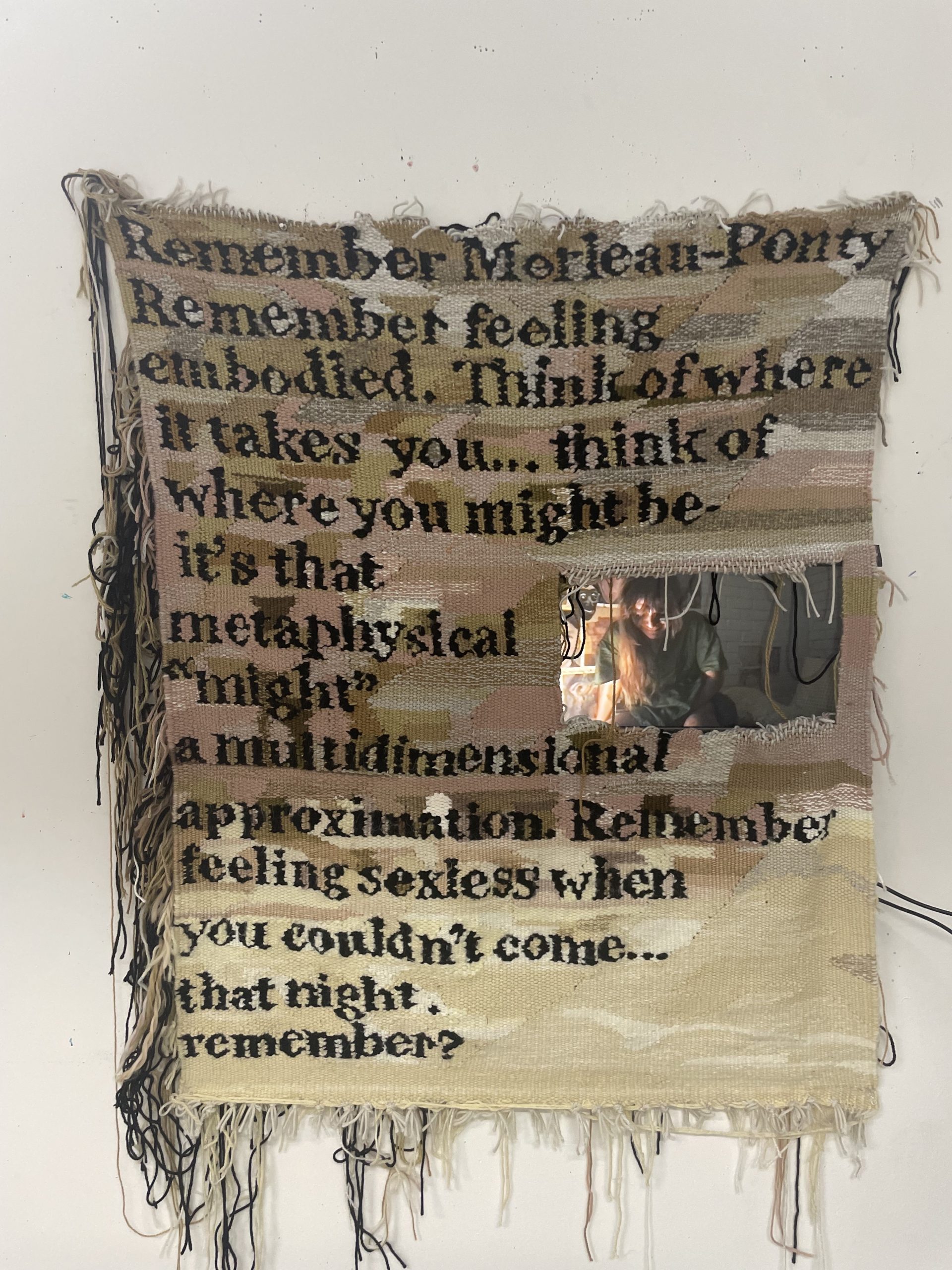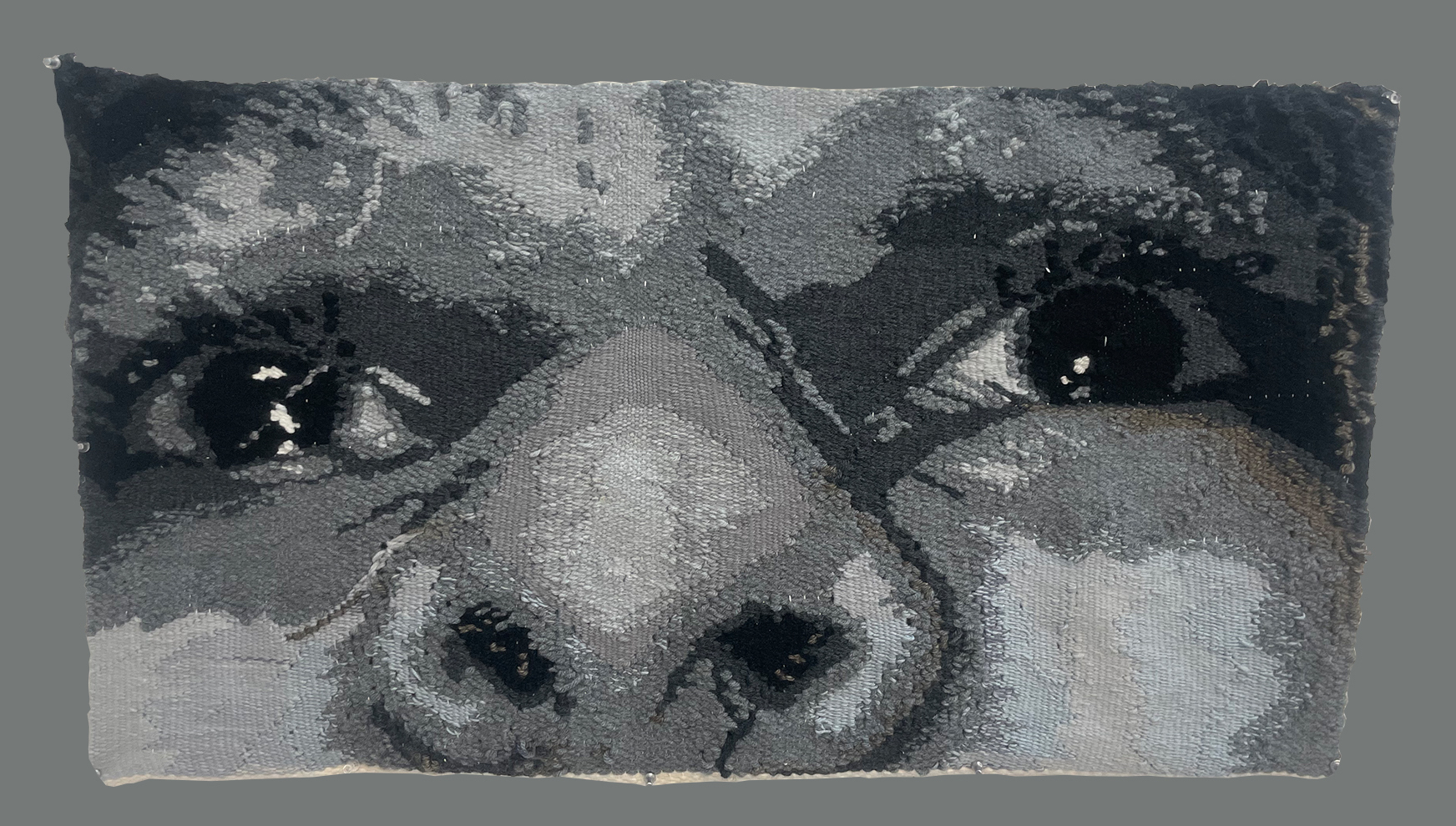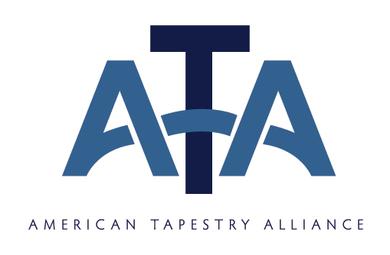2024 Awardee Rastislav Janardan

Rastislav Janardan
Remember Merleau Ponty?, 2023
60 in x 30 in
Wool, cotton, LED monitor
Artist Statement
I weave textual and figurative tapestries in wool and cotton on a vertical high-warp loom. Through them, I attempt to pick away at the impossible perspective of the economic migrant in a ‘multicultural’ metropole. Growing up in India and moving to the US for an education in the humanities, my tapestries are informed by an absence of cultural affinity in the face of the position invariably taken up by the class of ‘higher-learning’ seeking migrants from the post-colonial Global South – that of the informant. Attempting to work through and against the maxim ‘identitarianism within multiculturalism is simply a form of nativism’ I work with the siloed-in image of the self, private acts, and estrangement. This figures in a cultural coding – a micro-signalling via image. It’s present in an auto-fiction like gratuitous name-dropping – Merleau-Ponty, Lana Del Rey, Grindr, and Jstor take center stage in my tapestries. I am inspired by this impossible voice by ways of a rejection of the topos of Native Informant, and weave tapestries about the idea of an endless search for meaning in the reception of multiple truths. Working in tapestry allows me to play with the binarised art/craft modalities challenged by so many craftspersons and artisans contemporarily. It allows me to be slow and laborious in my critique.
I am fundamentally interested in how tapestry allows me to exist in multiple states concurrently – it allows me to engage in a skill-based learning, constantly tweaking my craftsmanship to help achieve a certain aspirational quality whilst also letting me participate in the subversive, critical, and tense discourse around the ‘art object’.

Rastislav Janardan
Face Theater, 2024
45 in x 30 in
Wool and cotton.
Biography
I have been weaving tapestries for six years and learned tapestry while training as a classical sitarist at a gurukul – Sanskrit, loosely translated to atelier – in New Delhi, India. I moved in with a group of classical instrumentalists at age eight – learning by doing whatever they did for a day job. This led me to art making; learning tapestry, silkscreen, and lithography became part of training on the Sitar, tracking a set of approaches to expression between Indian Classical Music and textiles.
In the class-stratified STEM/Arts – never shall the two meet – approach of the Secondary Education system in India, I was beginning to experience the effects of an active social marginalization of craftspeople, artisans, and musicians. The cultural dissonance of working in (and thinking through) media like tapestry in India, where craft is both celebrated and othered, ‘preserved’ by ways of an infantilizing rural/peripheral/endangered essentialism and discouraged as ‘lowly’, was beginning to attune me to the very legible and plural ‘histories’ of art, present not as a purely recursive academic enterprise of study, but as living within the gurukul and in communities of art-making.
Studying History of Art and Fibres at a US University has rerouted my engagement with the medium – my loom is a fixture in my life, like an instrument I come back to, to think through, and to think with. I have primarily engaged with tapestry as my medium of choice throughout my undergraduate education at Tufts University thus far… I am very eager to continue developing my voice through tapestry.

